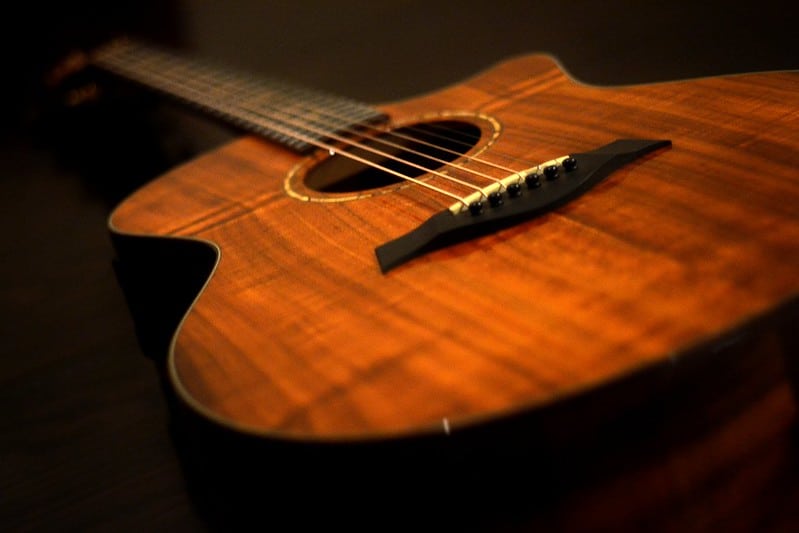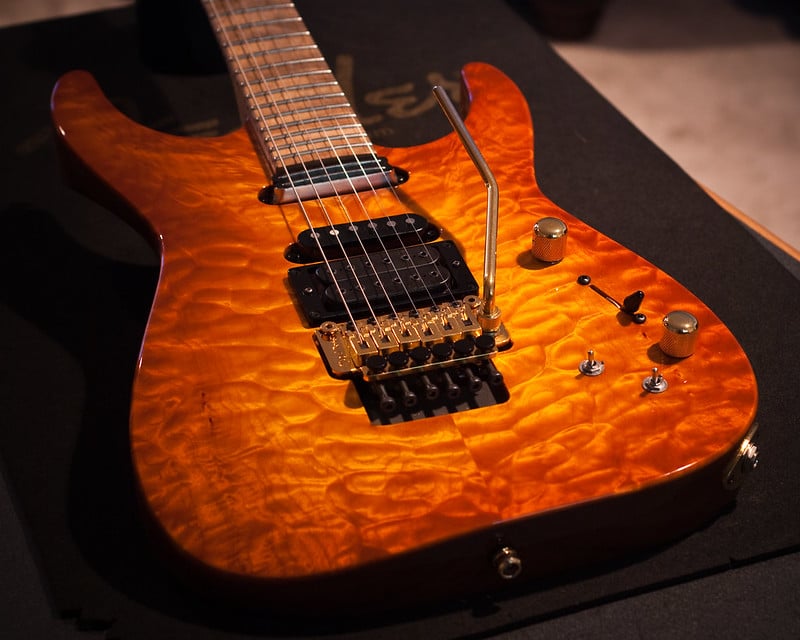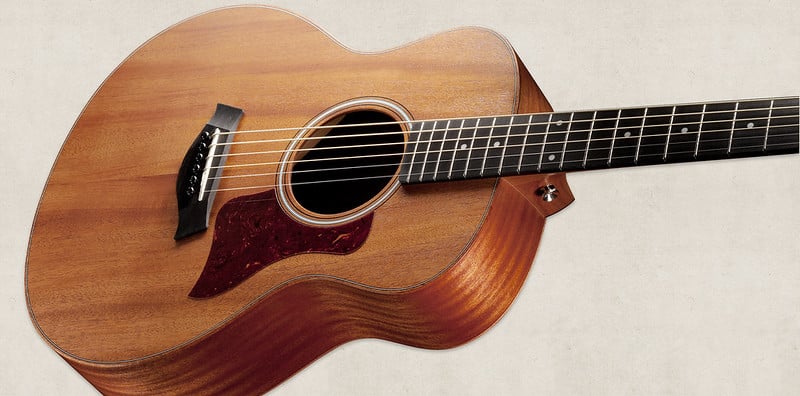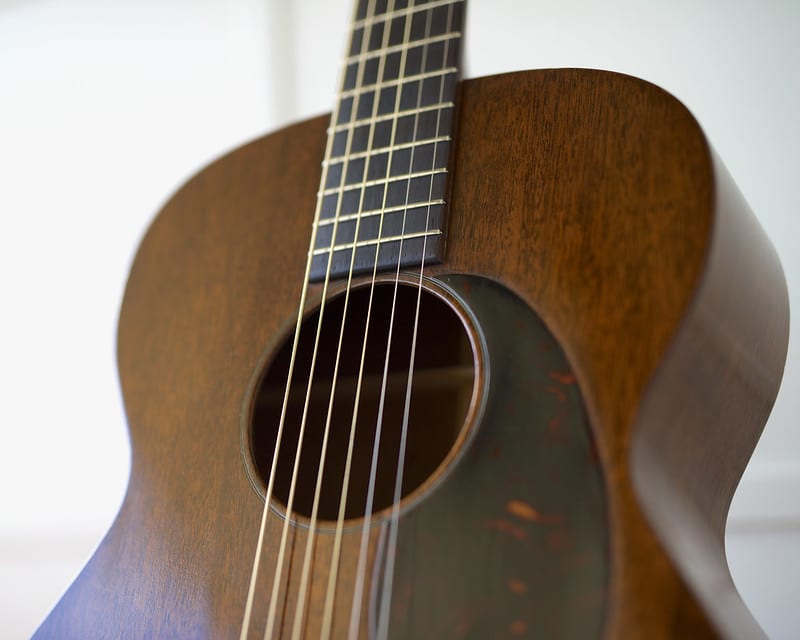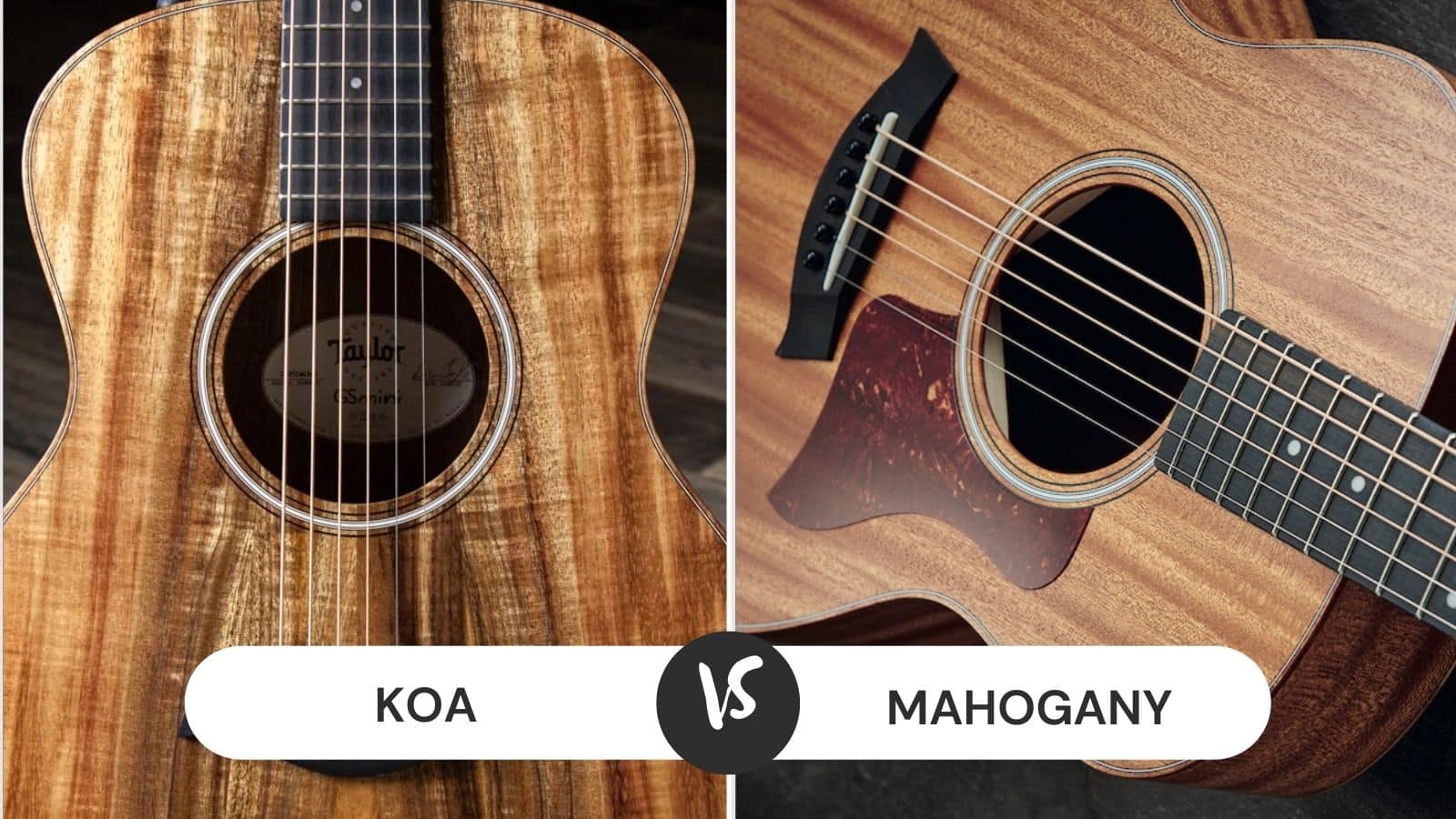
The guitar body is an important part of the guitar as it helps determine the tonal characteristics and resonance.
Similarly, which wood is used to create the top, back, and side can directly impact the music quality of electric guitars and acoustic guitars.
In most cases, the wood’s density impacts the sound quality and denser wood leads to a brighter tone and less sustain, and vice versa.
The bodies are commonly made from mahogany and koa wood but beginner guitarists don’t have an idea about their impact on the sound. For this reason, we are sharing differences in these wood types!
The Main Differences Between Koa vs Mahogany
| Koa | Mahogany | |
|---|---|---|
| Tone | Articulate, crisp, and bright | Full and warm |
| Appearance | Dark appearance with extremely prominent grain | Dark appearance with subtle grains |
| Availability | Rare | Easily available |
| Applications | Suitable for fingerpicking | Suitable for rhythm playing |
| Price | Expensive | Affordable |
Koa
It is a tropical and dense hardwood that helps blend the midrange focus with more brightness. Since it has a dense structure, the music tones will be richer.
This is an expensive and dense wood and the acoustic guitars made with this wood have koa all over the body, including the top, sides, and back, rather than using it on the sides and back only.
In most cases, it is used in the limited-edition guitars since it’s expensive. The wood is known for a unique yet prominent grain, which is why it has gained popularity for aesthetic reasons.
It creates extremely bright and crispy tones, given the treble emphasis. However, if you aren’t careful with the chords, it can produce harsh sounds as well.
As you start playing, it starts to warm up and produces a better sound when it’s broken in. However, it still manages to retain its brightness.
1. Sound
The koa-made acoustic guitars are preferred by fingerstyle player as it promises improved note separation and clarity. Similarly, it’s recommended for music genres that demand sophistication.
The koa wood improves the dynamic range of the guitar. This is why it’s used by guitarists who like creating country music as well as folk music. However, koa’s dense structure increases the weight, which must be considered.
The koa-based guitars can be used for strumming, but if you use nails, there will be a risk of extremely bright sound. For this reason, it’s recommended to use koa-based guitars if you use a thumb pad for strumming.
Koa has articulate and bright tonal characteristics as it’s focused on the treble frequencies instead of bass frequencies. In addition, koa promises a strong response in the mid-range, which results in deep and full sound output.
The koa guitars are known to have weaker mid-range response and bass but there is more focus on the treble. The brightness of the music is actually preferred by the lead players.
In addition, the guitarists who have a lighter touch get the best out of these guitars. The new koa guitars have an extremely bright sound but the tone starts warming up with time (they will still remain brighter when compared to mahogany).
2. Usage & Design
It is basically a tonewood that’s used for acoustic guitar manufacturing but it’s used in Hawaiian steel guitars and ukuleles as well.
In addition, it has tighter grains which help produce a balanced tone with a clear bottom end as well as a more defined upper range.
It can be easily finished but is prone to tearing, which is why koa-based guitars need more maintenance. The midrange is pretty warm and has moderate warmth upon opening. Honestly, it’s not overly loud but there is sufficient projection.
It’s commonly used in acoustic guitars but it can be used in electric guitars as well for top construction (it doesn’t work well as fretboard or neck material because the wood is soft and can break down).
Koa does a great job at bringing out the high and low ends as it’s easier to work with. It has easier bending and workability. Overall, it is solid and stable wood with promising sustain. The low-end is balanced while the top-end is more refined.
Pros
- Bright sound
- Exceptional note separation
- Suitable for delicate playing
- Preferred by fingerstyle players
- Unique and premium aesthetic
Cons
- Expensive
- Needs time to warm up the tones
- Not suitable for strummers
Mahogany
Mahogany is one of the most popular wood varieties used in acoustic guitars and is usually used for manufacturing the sides and back of the guitar. In some cases, it’s used to make the guitar’s neck and top body as well.
As the name suggests, this wood has a darker color tone, but depending on the wood’s type and form, it might have a caramel appearance as well. In most cases, the mahogany guitars have a visible grain but it’s not very striking.
1. Sound
These guitars are designed for a full and warm tone. The mahogany guitars offer higher mid-range, which improves the depth of tones.
It has a relatively flatter EQ curve, which means the tone won’t be very bright or articular as compared to other wood varieties, particularly koa.
The guitars made from mahogany wood are extremely popular among rhythm players, particularly if they like full and warm tones. In addition, there is no brightness, so nothing interferes with the sound output.
Keep in mind that it’s not recommended for players who need crisp and bright tones during fingerstyle playing. In addition, it’s not very loud but the strummers can increase the volume if they want.
As far as brightness is concerned, slight brightness can be added to the music if you play with nails rather than using the thumb pad. These guitars can be easily paired with other types of wood on the guitar’s top to compensate for the brightness.
Mahogany wood has full and warm tonal characters and there is a slight hump in the mid-range for guitarists who like louder mid-ranges. The acoustic guitars made from mahogany wood produce fuller and warmer sounds.
Since the tone is warmer, the rhythm players tend to prefer these guitars. In addition, the players who like to dive deeper into the music feel like the mahogany guitars better.
It is not as dense as koa, which is why the mahogany-based guitars are more lightweight.
In addition, mahogany wood has higher elasticity, which promises exceptional resonance, making it suitable for multiple music genres. On top of everything, mahogany wood is available in multiple finishes.
Last but not least, this variety of wood tends to be more affordable and is easily available, which is why the guitars made from this material are more affordable. On the contrary, there is no note separation.
2. Usage & Design
Over the past few years, acoustic guitars made from mahogany have become extremely popular as it promises a distinctive feel and sound. This is a medium-lightweight wood, promising easier handling of the guitar.
The wood is available in various colors, ranging from dark brown tones to lighter ones. In addition, some mahogany varieties have a red timber shade as well.
It promises a resonant tone, which promises longer sustain. In addition, the sound is more balanced and stable.
Overall, it has a controlled high-end with a thick bottom-end and can balance various sound ranges pretty easily. Also, it suits the majority of guitar shapes and players.
Pros
- Affordable
- Easier to find
- Warm and full tone
- Suitable for rhythm players
- Complements other wood tops
Cons
- No note separation
- Lesser clarity
- Doesn’t produce much sound
The Bottom Line
Both mahogany and koa are durable woods but they create extremely different tones. However, it’s possible to use both mahogany and koa guitars for fingerpicking and strumming but it dials down to the tone you want.
In simpler words, the koa guitars are recommended for players who want crispness and brightness in their music while mahogany wood is suitable for people who want to create a full, deep, and warm tone.

